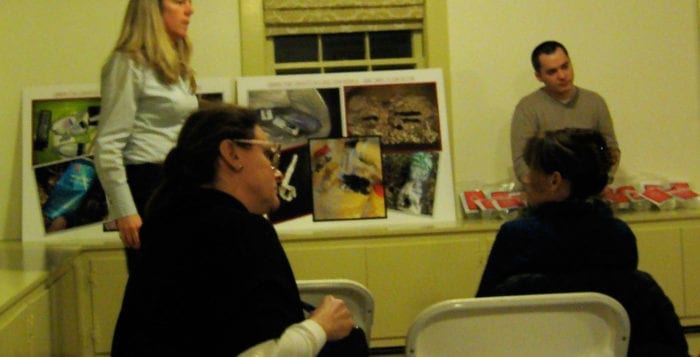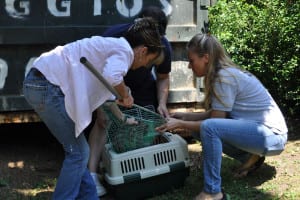Heroin addiction can still be seen as a closely guarded secret in North Shore communities, but a couple of Three Village residents are doing their part to try to change that.
About 20 people were present Jan. 22 at the Bates House in Setauket for an informational meeting geared to help the loved ones of those battling heroin addiction. The addicts themselves were not present, but parents, grandparents, siblings, friends and other loved ones were, with the hope of gaining a greater understanding for how to combat the problem.
The gathering was a joint venture of both the public and private sectors, initiated by Lise Hintze, manager of the Bates House, a community venue in Frank Melville Memorial Park.
To help a loved one dealing with addiction call Lise Hintze 631-689-7054
“Pretending we don’t have a drug problem [in our community] only hurts the children and perpetuates the problem,” Hintze said. “I have a 19-year-old and a 21-year-old and we’ve been to too many funerals. Parents say ‘not my child, not in our town’ but it’s very real and it’s happening here.”
Stony Brook resident Dori Scofield, who lost a son to heroin addiction in 2011, established Dan’s Foundation For Recovery in his memory to provide information and resources to others. Old Field resident Dana Miklos also has a son battling addiction and she wants to share what she has learned to empower parents and help them deal with addiction’s many challenges. The two represent the “private” interests.
“One of the reasons I wanted to come out and talk about it is to give parents ways to navigate through this horrible process,” Scofield said. “From being at the hospital when your son or daughter ODs and you know you have to get them into treatment, but you don’t know [how].”
Scofield said she dialed a 1-800 number someone had given her when her son overdosed and said she lucked out when the placement turned out to be a good one. She told the event attendees they need not “reach out to a stranger” as she did. She can help.
Miklos wants to eliminate the stigma that keeps affected families in hiding.
“I want parents to know the three Cs: they didn’t cause it, they can’t cure it, and they can’t control it,” she said. “We become so isolated [dealing with an addicted child] just when we should be talking to other parents, supporting each other.”
Suffolk County Leg. Kara Hahn (D-Setauket), who has been working to alleviate the community’s drug problem since taking office, also participated in the event.
“In 2012, the first year I was in office, I couldn’t believe this would be something I could work on and change,” Hahn said. “But I wrote legislation that got Narcan — which is an antidote for opioid overdoses — for our police sector cars. Within a matter of days we were saving one, two, three a day. Within two weeks we had an officer who had two saves back to back.”
Hahn said she authored another bill that would make sure there was a follow-up for each person saved. A Narcan reversal saves a life, but does nothing to end the need for the drug and the cravings. The second piece of legislation tasks the health department with reaching out to those saved to attempt to get them into treatment.
A third piece of legislation she wrote provides training for lay people — like the group assembled at the Bates House — to carry and use Narcan. She encouraged all present to be trained and prepared.
The statistics Hahn gave for Narcan saves showed a steady increase over the last five years. In 2012 after passage of the legislation in August, there were 325 saves. Numbers rose year by year to 475 in 2013, 493 in 2014, 542 in 2015 and 681 in 2016 when at least 240 people died of overdoses, according to Hahn.
David Scofield, who has been sober for three years, delivered a message of hope for those in attendance.
“I don’t have the answers,” he said. “I do know how [it is] to be a kid struggling with drug addiction. This thing is killing people. Hundreds of people are dying from heroin addiction every day and you don’t hear about it. That’s just the truth.”
Scofield’s message also included a plea for loved ones of addicts to get past the stigma of addiction and bring the conversation to the community. As long as people hide the cause of death, he said, he believes kids will continue to die.
For information about this support group, call Lise Hintze 631-689-7054.












